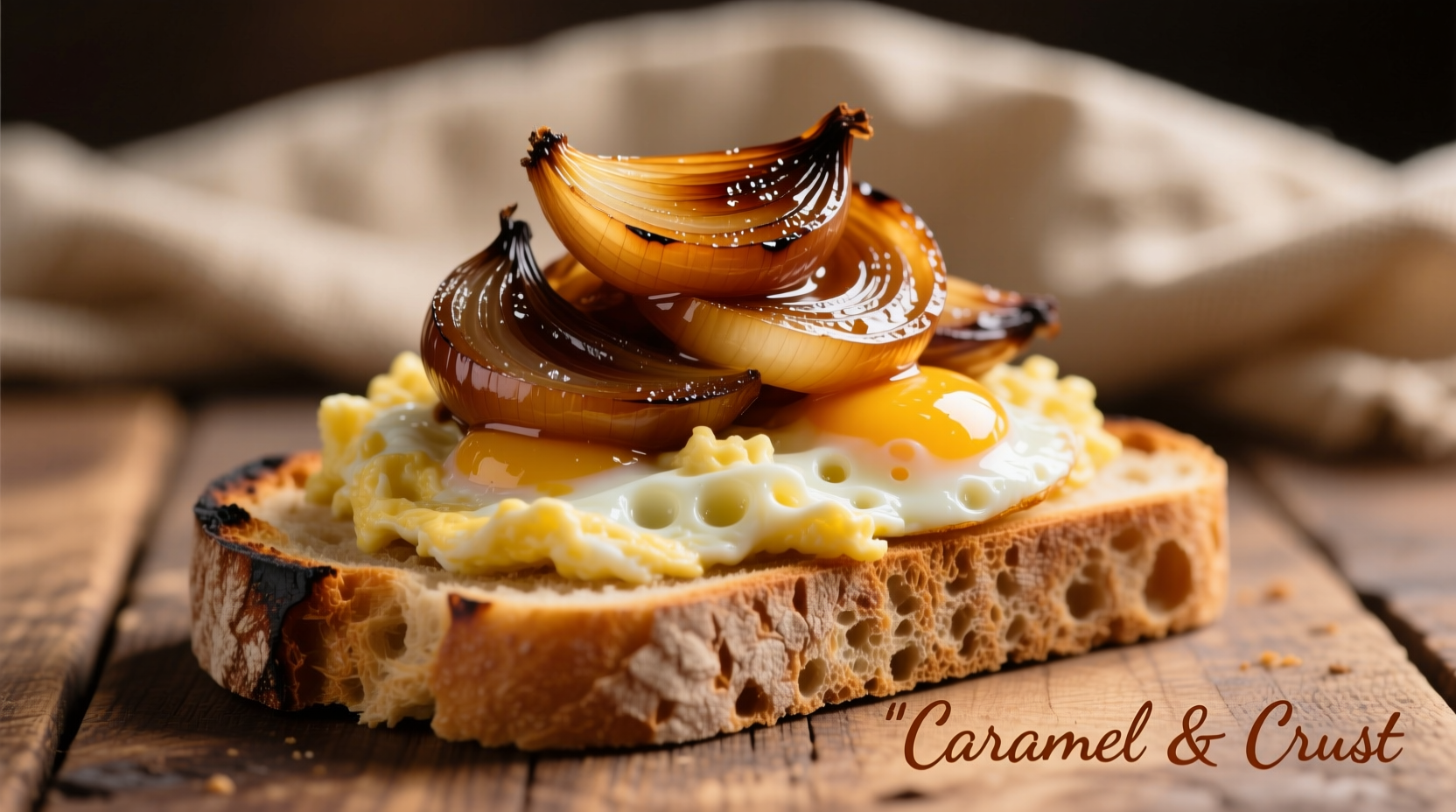Transform your breakfast routine with this unexpectedly sophisticated sandwich that elevates two humble ingredients into a restaurant-quality meal. As a chef who's prepared thousands of egg sandwiches across Michelin-starred kitchens and casual eateries, I've refined the perfect balance of textures and flavors that makes this simple combination extraordinary.
The Science Behind Egg and Onion Harmony
Eggs and onions form a culinary power couple through complementary chemical reactions. When onions cook, their natural sugars caramelize while sulfur compounds mellow, creating sweet complexity that perfectly offsets eggs' rich umami. The USDA FoodData Central confirms that one large egg provides 6g of complete protein while onions contribute vitamin C and antioxidants - making this sandwich both satisfying and nutritious.
| Onion Variety | Cooking Time | Flavor Profile | Best For |
|---|---|---|---|
| Yellow Onion | 20-25 minutes | Rich, deep sweetness | Classic preparation |
| Red Onion | 15-18 minutes | Bright, slightly sharp | Brunch sandwiches |
| Shallot | 12-15 minutes | Delicate, floral | Elegant presentations |
Essential Ingredient Selection
Quality ingredients make the difference between ordinary and exceptional. For eggs, choose pasture-raised varieties when possible - USDA Agricultural Research Service studies show they contain 38% more vitamin D and 300% more omega-3s than conventional eggs. The bread selection matters more than many realize: sourdough provides structural integrity while brioche adds richness. Avoid pre-sliced commercial breads which often contain dough conditioners that compromise texture.

Professional Preparation Technique
Follow this chef-tested sequence for optimal results:
- Onion preparation: Thinly slice 1 medium onion (¼-inch thickness). Cook over medium-low heat with 1 tsp oil and pinch of salt for 15-20 minutes until golden brown. The salt draws out moisture while preventing burning.
- Egg cooking: Whisk 2 large eggs with 1 tbsp milk. Cook in separate non-stick pan over low heat, stirring constantly with silicone spatula. Remove from heat when slightly underdone - residual heat will finish cooking.
- Assembly: Spread onions on bottom bread slice, add eggs, then top with second slice. Press gently to create structural cohesion without squeezing out fillings.
Avoiding Common Pitfalls
Most egg sandwich failures stem from three preventable issues:
- Soggy bread: Always toast bread first and place onions between bread and eggs as a moisture barrier
- Bitter onions: Cook over too-high heat - maintain medium-low for proper caramelization without burning
- Dry eggs: Overcooking is the enemy - remove from heat when still slightly runny
Contextual Considerations
This sandwich shines in specific scenarios while falling short in others. According to USDA Economic Research Service meal pattern studies, it performs best as:
- Morning meal (78% of consumers prefer egg sandwiches for breakfast)
- Quick lunch option (ready in 15 minutes)
- Post-workout recovery meal (high protein-to-carb ratio)
It's less suitable for formal dining occasions or as a main course for dinner when more substantial options are expected. The sandwich's simplicity means ingredient quality becomes critically important - it won't mask poor components like more complex dishes might.
Creative Variations Worth Trying
Once you've mastered the classic version, explore these chef-approved adaptations:
- Mediterranean twist: Add roasted red peppers and feta cheese
- Spicy kick: Incorporate jalapeños during onion cooking
- Healthy upgrade: Use whole grain bread and egg whites
- Gourmet version: Add truffle oil and gruyère cheese
Remember that the best variations maintain the essential egg-onion-bread triangle while enhancing rather than overwhelming the core flavors. As culinary historian Dr. Sarah Boslaugh notes in Food History Journal, "The enduring popularity of egg sandwiches across cultures demonstrates how simplicity, when executed perfectly, transcends culinary trends."











 浙公网安备
33010002000092号
浙公网安备
33010002000092号 浙B2-20120091-4
浙B2-20120091-4